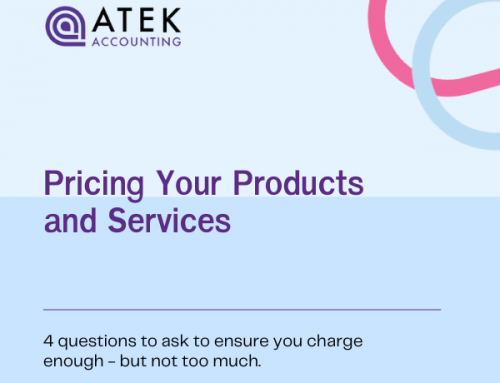
When you’re running a tech business, the words “negative cashflow” certainly don’t sound like much of a cause for celebration, and truthfully, they often aren’t. However, negative cashflow isn’t always a cause for concern, and even when it is, there are steps you can take to rectify and manage the situation.
What is Negative Cashflow?
The term “cashflow” refers to the money that enters and leaves your business over a set period of time. Negative cashflow means that more money is going out than coming in.
It’s important not to conflate cashflow and profit. It’s entirely possible to be in profit and run out of cash, or vice versa. A negative cashflow doesn’t necessarily mean that you’re making a loss, since cashflow only refers to liquid assets.
However, you need to make sure that you don’t run out of cash because you can’t use tied-up assets to pay your staff, suppliers, and energy bills.
Is Negative Cashflow Bad News for Tech Businesses?
Negative cashflow can occur for a number of reasons.
Often, negative cashflow is a necessary part of growth. Tech businesses increase spending when planning for growth so that they can earn more further down the line.
For example, an app development company may need to invest in Research and Development before they can bring a new product to market. This might mean spending more than they make for a short while.
New tech businesses also need to invest in order to establish themselves and create a buzz around their business.
Seasonal businesses may also experience negative cash flow during quiet times of the year, and may need to spend more than they are currently making in order to prepare for the next busy season.
In short, negative cashflow is not always bad news. However, a prolonged period of negative cashflow is bad news since your business’ liquid assets won’t last forever. You need to have cash to continue operations.
The Causes of Negative Cashflow in a Tech Businesses
As mentioned, negative cash flow can occur when a tech business is investing in its future success, but if this is not the case for your business, then there are some other key causes to look at.
1. Increased Expenses
If supplier prices suddenly shoot up, you could suddenly find yourself facing negative cash flow. Similarly, emergency or unexpected expenses, such as equipment repairs, can threaten your cashflow.
2. Late Payments
If your customers don’t pay on time, your cashflow will suffer. Your suppliers won’t let you pay a month late just because your customer did.
3. Pricing
Without adequate research and forethought, you could end up underpricing or overpricing your product, and both of these scenarios threaten your cashflow.
Under-pricing your products or services will result in low profit margins, whereas over-pricing leads to a struggle to make sales.
4. No Budget
If you don’t create a realistic budget, the chances are you will end up overspending and managing your money poorly. It’s important to get a clear picture of your spending and understand what you can and can’t afford.
Actions To Combat Negative Cashflow
Once you understand what is causing your negative cashflow, you need to take action to fix it.
1. Reduce Expenses
Cutting down on your expenses is an important first step. Take a look at your spending and consider which overhead costs are unnecessary and can be eliminated. You may also be able to reduce your operating costs by outsourcing certain roles and shopping around with vendors and suppliers.
2. Eliminate Unprofitable or Low-Selling Products
Take a look at your sales figures and determine which products don’t create significant income for your tech business. Be sure to balance popularity against profitability. For example, a product might have a high profit margin but hardly sell at all. This makes it difficult to shift inventory and serves as a drain on your cash flow.
3. Review Payment Terms
It’s important to encourage your customers to pay you ASAP. Shortening payment cycles is one effective way to do this. Thanks to email, invoicing software, and electronic payments, your customers are now able to pay you much more quickly than they were decades ago, so update your terms accordingly.
You may also want to offer early payment incentives and introduce late fees to make sure that your customers pay you promptly.
4. Create an Emergency Fund
Fail to prepare, prepare to fail, as the saying goes.
Even if your cashflow is healthy right now, it never hurts to have an emergency fund to act as a buffer for when sales take a dip or an unexpected payout becomes necessary. Look at ways to reduce your cash outflow and then syphon the extra funds into an easy-access emergency savings account. Arranging a line of credit can also give your tech business a little extra breathing room, too.
Managing Cashflow Challenges
Negative cashflow is not always bad news, but it can lead to some serious problems if left unchecked.
It can be caused by increased expenses, late payments from your customers, or a poor pricing strategy. All businesses face negative cashflow at one point or another; the important thing is to identify what is causing it and then take action accordingly, for example, by cutting expenses or eliminating unprofitable products. In addition, it’s important that you create emergency funds so you have something set aside when things go wrong. The best thing that you can do is keep a close eye on your cashflow at all times so that if difficulties do arise, you are well-equipped to deal with them.
Forecast Your Cashflow With Atek
At Atek, we provide our clients with cashflow forecasting and business planning services to ensure they are managing their finances effectively to support growth. If you are unsure of your cashflow health or are working to rectify a negative cashflow position, we can help.
We can set your business up with online accounting and bookkeeping packages like Xero and Dext to automate payment collection and invoicing processes.
We can help you put together a well-considered business plan, which will allow you to plan and formulate realistic and accurate forecasts.
If you’re interested in learning more about the work we do to support tech businesses, please contact us to arrange an initial conversation.












